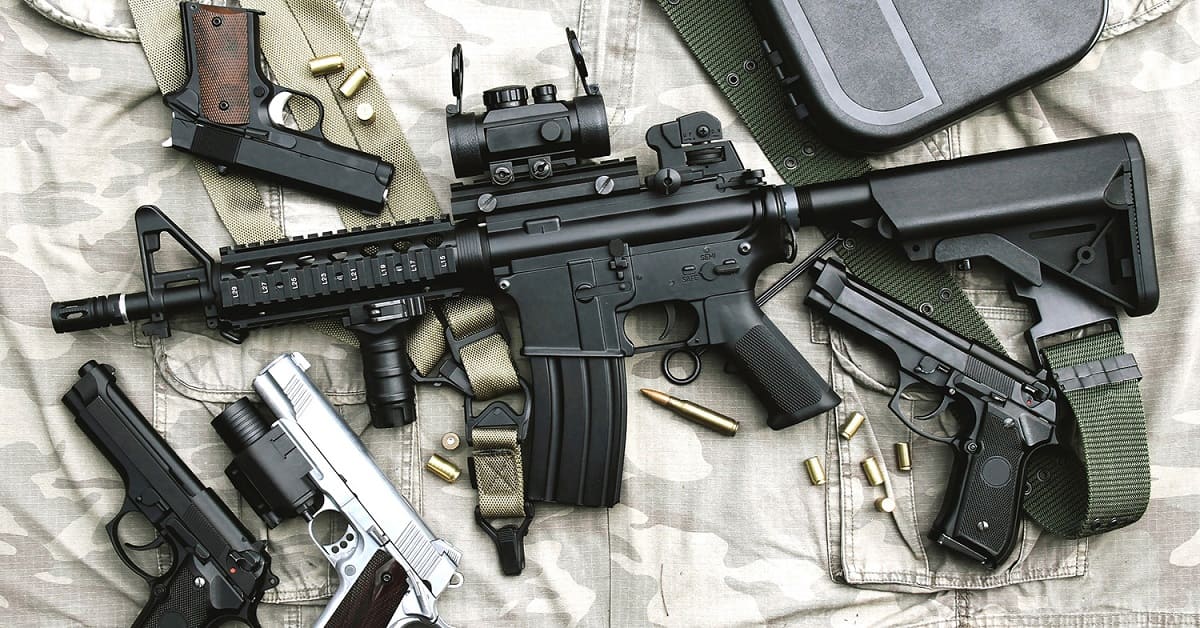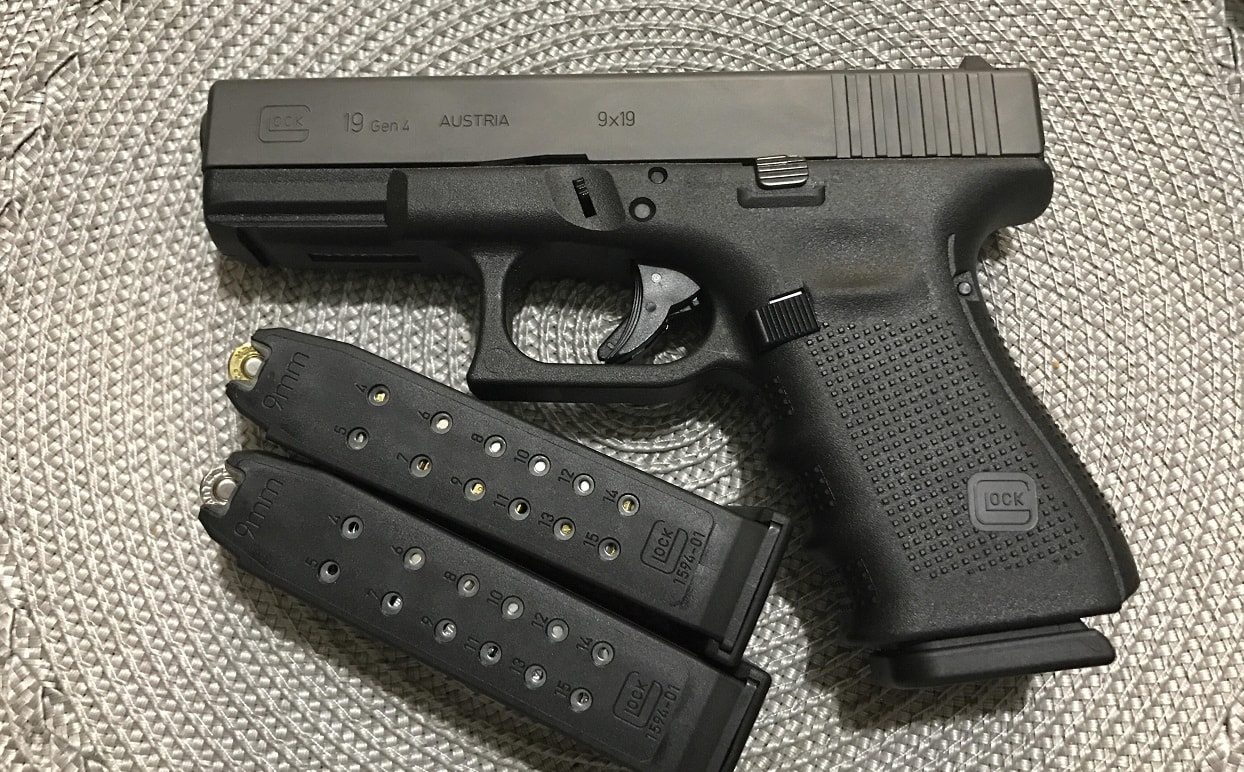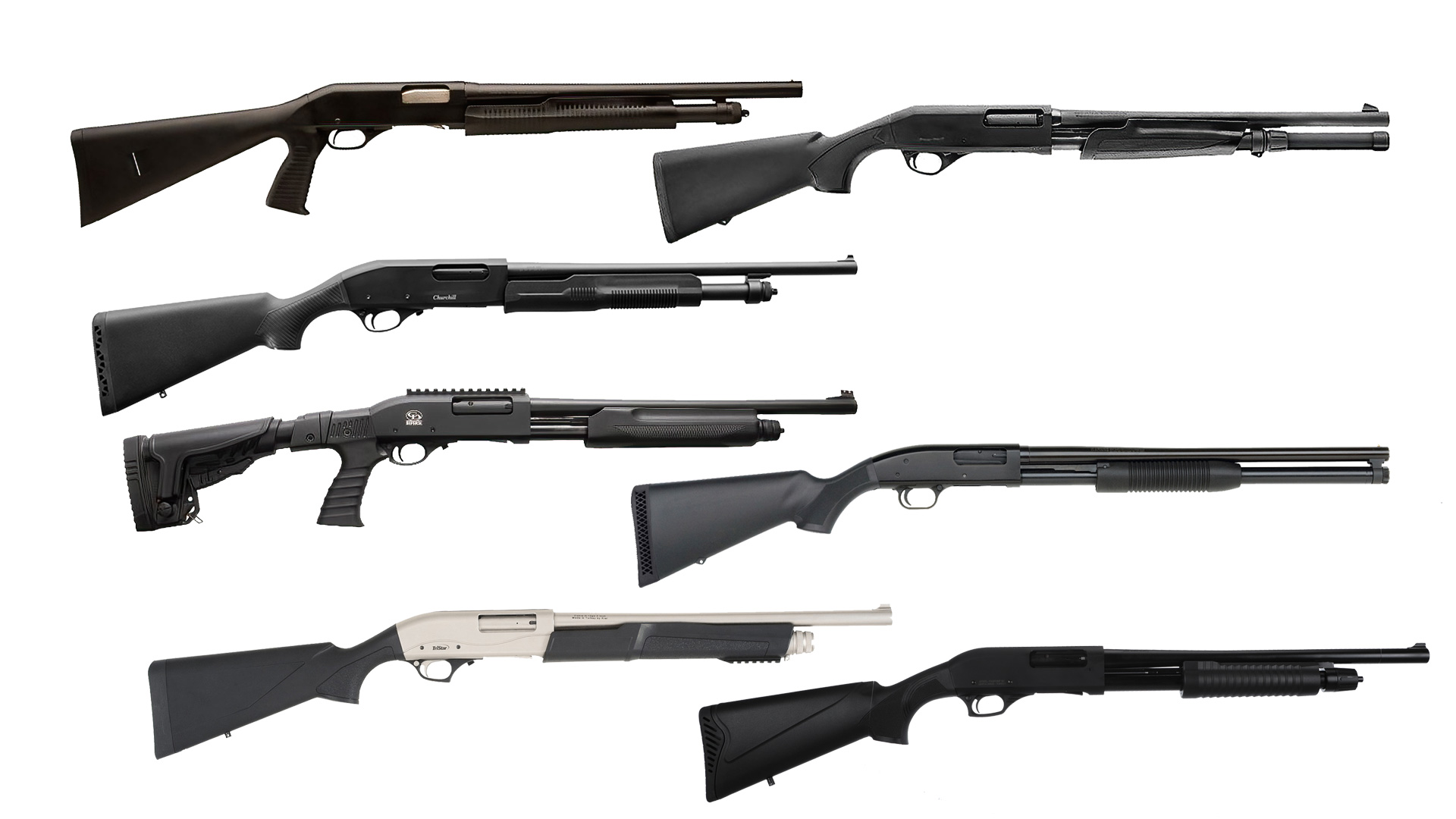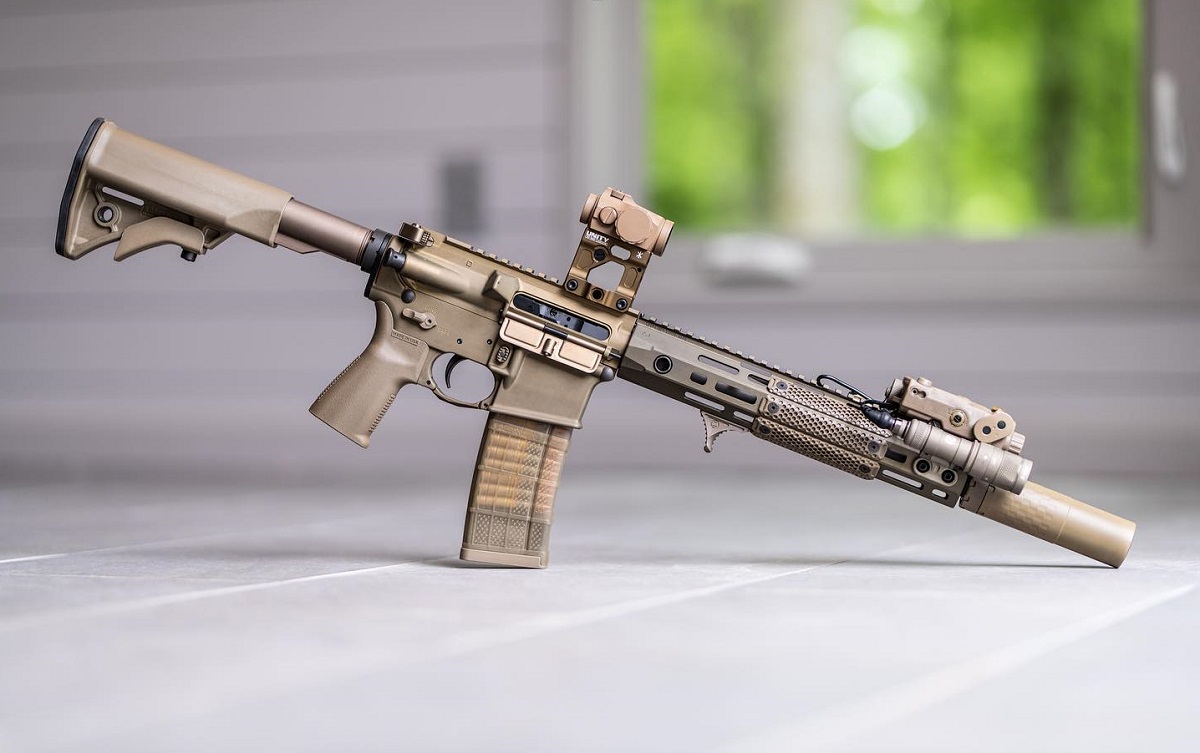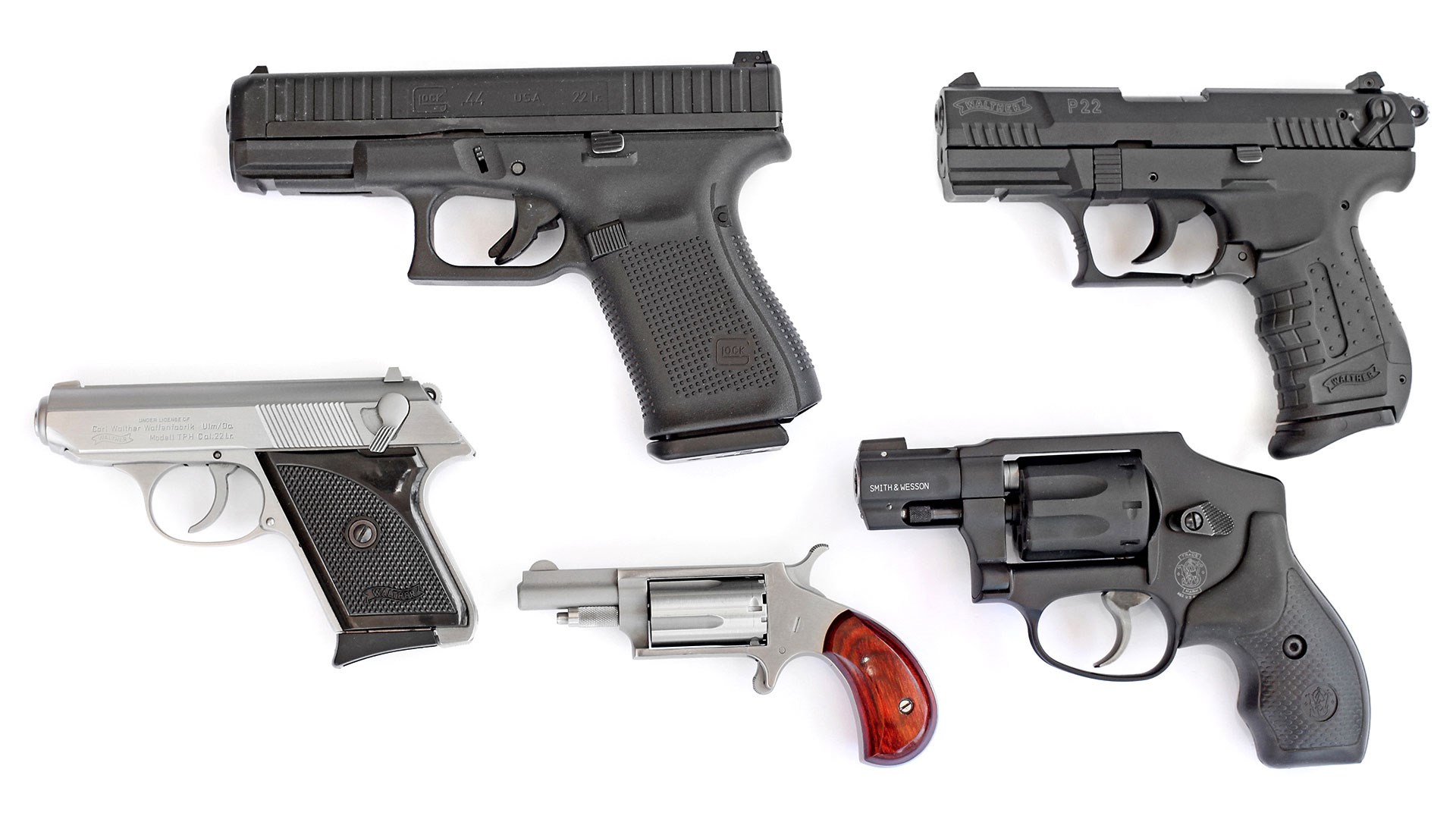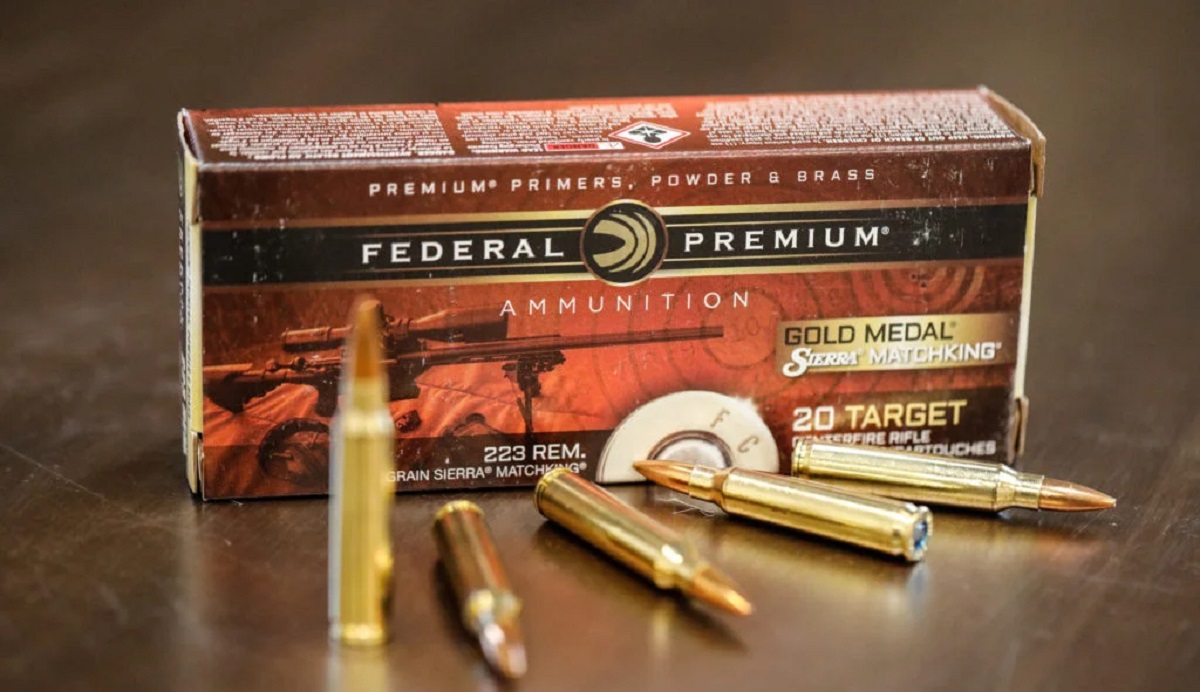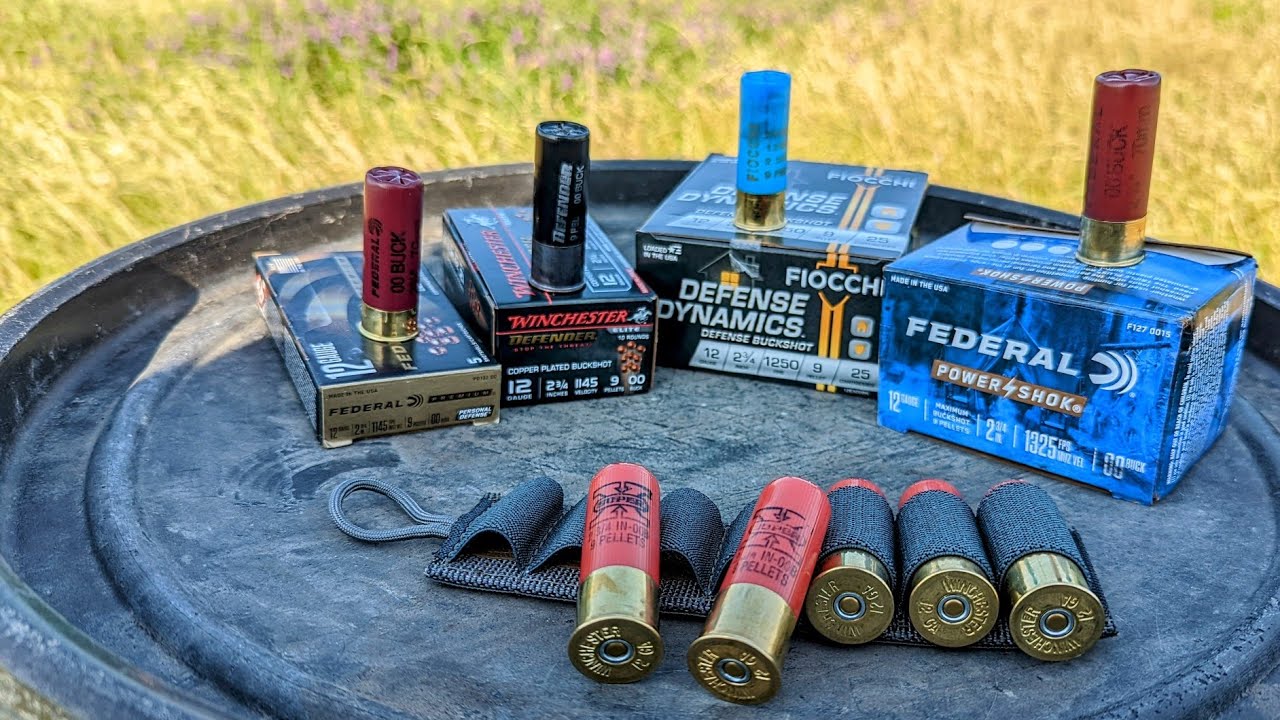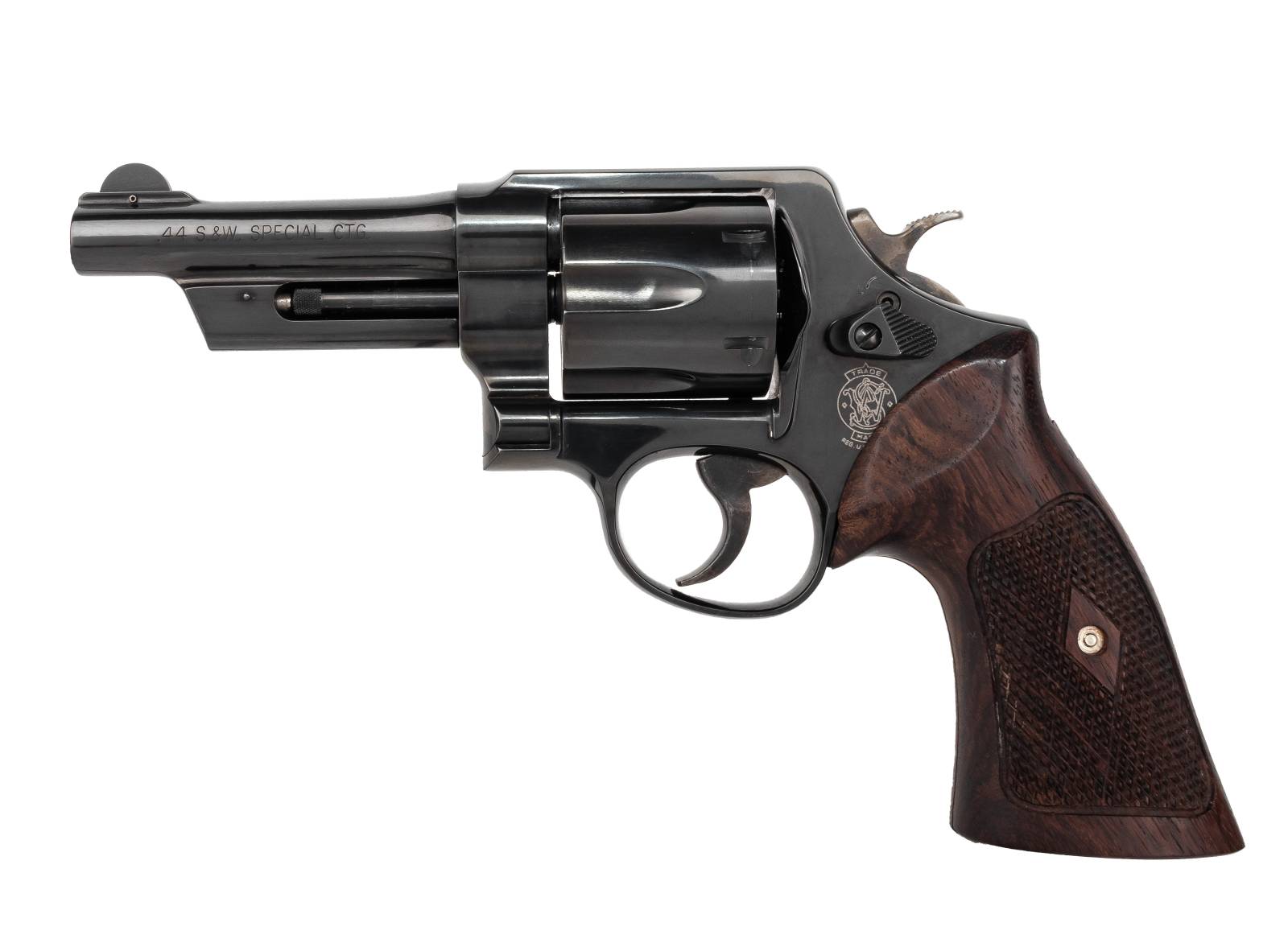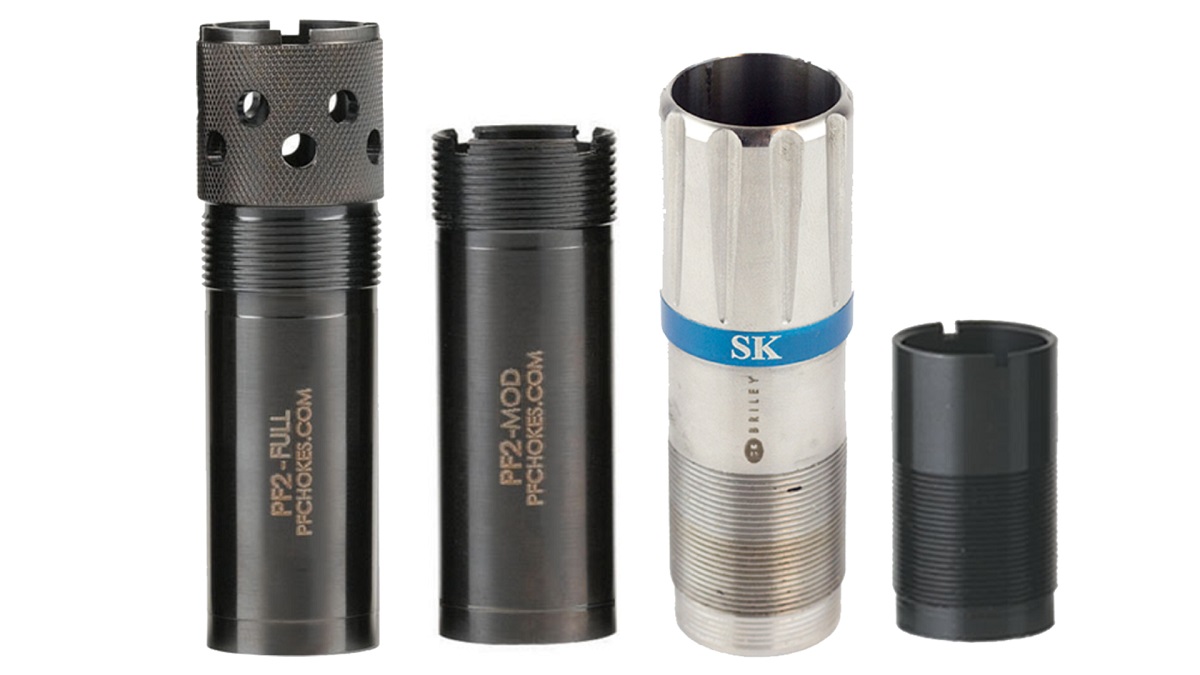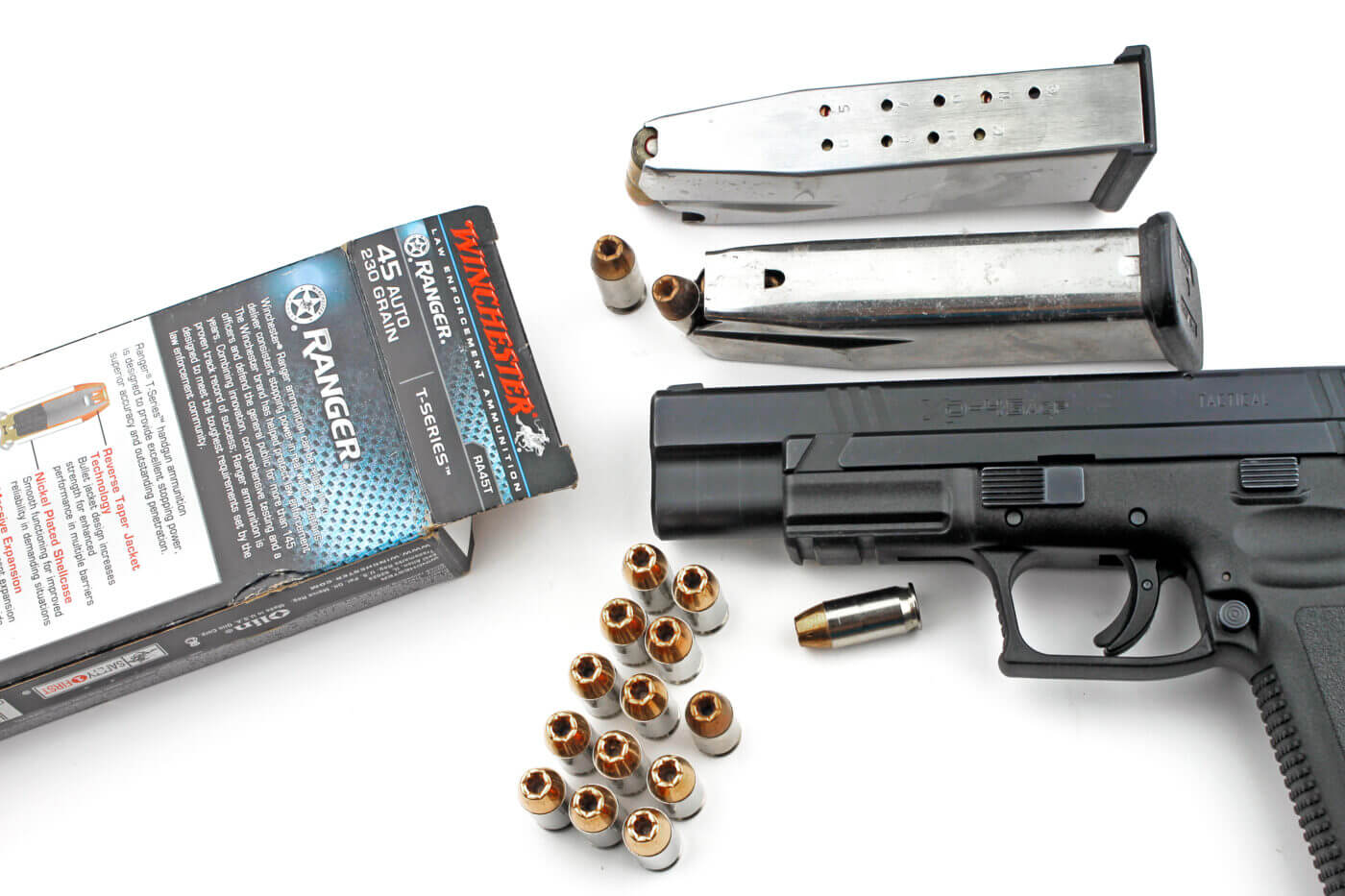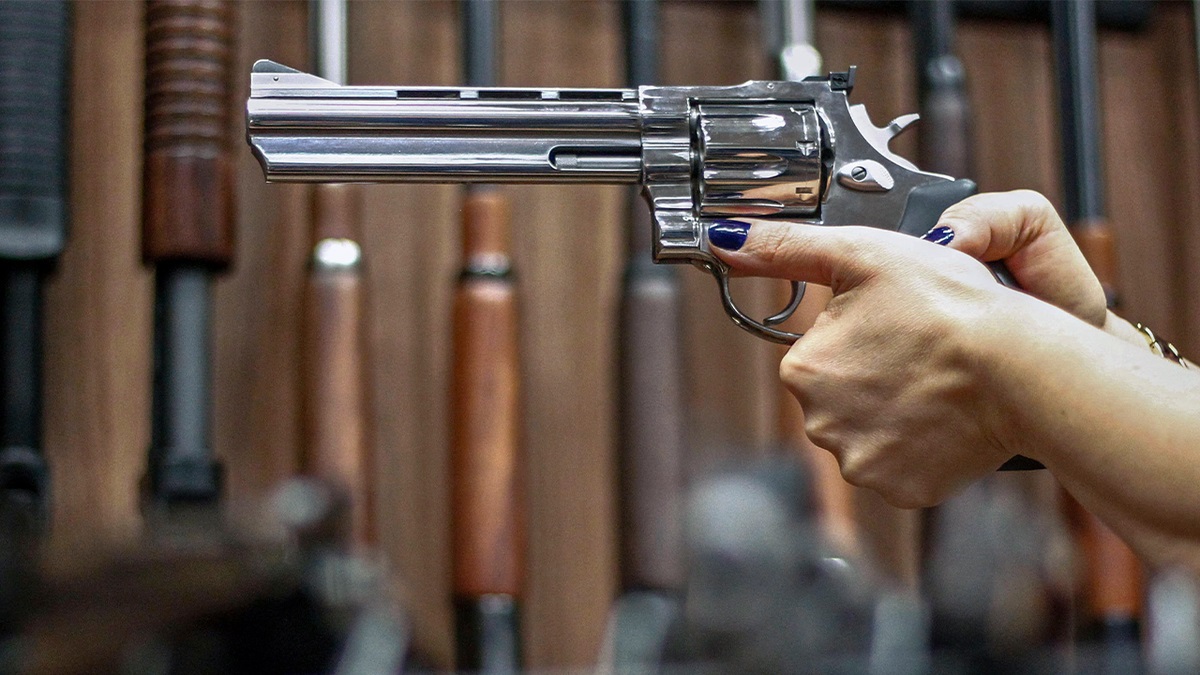Home>Home Security and Surveillance>What Is The Best Home Defense Round To Reload For 300 Blackout
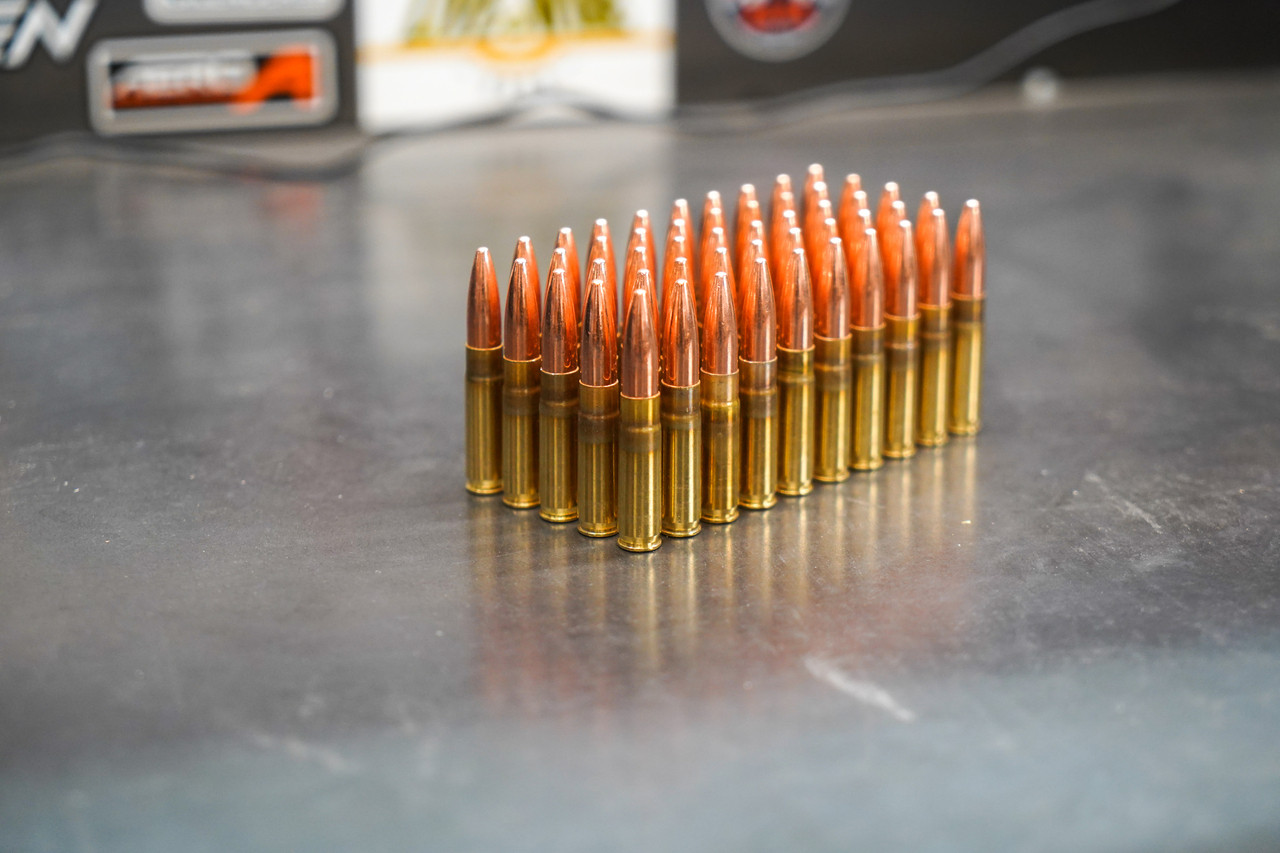

Home Security and Surveillance
What Is The Best Home Defense Round To Reload For 300 Blackout
Modified: March 6, 2024
Discover the best home defense round for reloading in 300 Blackout. Enhance your home security and surveillance with this powerful ammunition.
(Many of the links in this article redirect to a specific reviewed product. Your purchase of these products through affiliate links helps to generate commission for Storables.com, at no extra cost. Learn more)
Overview of Home Defense in 300 Blackout
When it comes to home defense, choosing the right ammunition is crucial. The 300 Blackout cartridge has gained popularity among gun enthusiasts for its versatility and effectiveness in close-quarters situations. It offers a balance between power and controllability, making it an excellent choice for defending your home.
The 300 Blackout is a versatile round that was developed specifically for use in short-barreled rifles and suppressors. It provides a significant increase in stopping power compared to traditional handgun calibers, while still offering manageable recoil. This makes it ideal for engaging threats in confined spaces without sacrificing control.
One of the main advantages of the 300 Blackout for home defense is its ability to deliver substantial energy and terminal performance. The round is available in a variety of bullet weights, which allows users to tailor their ammunition selection based on their specific needs and preferences.
In addition, the 300 Blackout is highly compatible with the AR-15 platform, which provides users with a wide range of firearms and accessories to choose from. This compatibility allows for customization and optimization of the weapon system for home defense purposes.
When selecting ammunition for home defense in 300 Blackout, it is essential to consider factors such as bullet type, weight, powder selection, primer options, case preparation, and reloading techniques. By taking these factors into account, you can ensure that your home defense rounds are optimized for performance and reliability.
Reloading your own home defense rounds for the 300 Blackout offers several advantages. It allows you to tailor your ammunition specifically to your needs, potentially reducing overall costs, and providing better performance consistency. However, reloading ammunition requires specialized knowledge and equipment, so it is essential to approach the process with caution and follow proper guidelines.
Throughout this article, we will explore various aspects of reloading home defense rounds for the 300 Blackout. We will discuss factors to consider when choosing bullet types and weights, powder selection, primer options, case preparation, and reloading techniques. Additionally, we will provide tips and recommendations for testing and evaluating the performance of your reloaded home defense rounds.
By understanding these aspects and following reliable guidelines, you can confidently and effectively reload home defense rounds for your 300 Blackout, ensuring that you have reliable and optimized ammunition to protect yourself and your loved ones.
Key Takeaways:
- Choose the right bullet type and weight, powder, primer, and case preparation for reliable and effective home defense rounds in the 300 Blackout. Regular testing and evaluation ensure safety and performance.
- Reloading home defense rounds for the 300 Blackout requires precision, knowledge, and dedication. Prioritize safety, follow guidelines, and regularly test your ammunition for reliability and effectiveness.
Factors to Consider when Reloading Home Defense Rounds
Reloading your own home defense rounds for the 300 Blackout allows you to have more control over the performance and reliability of your ammunition. However, it is essential to consider several factors to ensure that your reloads are optimized for home defense situations. Let’s explore these factors in detail:
1. Bullet Type: The choice of bullet type plays a significant role in determining the terminal performance of your home defense round. Hollow point bullets are a popular choice as they expand upon impact, creating larger wound channels and increasing the stopping power. They are designed to transfer energy quickly and effectively, minimizing the risk of overpenetration.
2. Bullet Weight: The bullet weight affects the velocity, recoil, and terminal performance of the round. For home defense situations, it is recommended to choose medium to heavyweight bullets, typically ranging from 110 to 147 grains. These bullets offer a good balance between penetration and expansion, increasing the effectiveness of your rounds.
3. Powder Selection: Selecting the right powder is crucial for achieving consistent performance and reliable ignition. Look for powders specifically designed for the 300 Blackout, such as H110, Lil’Gun, or CFE BLK. These powders are known for their clean burn characteristics and excellent performance in short-barreled rifles.
4. Primer Options: Using reliable primers is crucial to ensure consistent ignition and reliable performance. Small pistol primers, such as CCI 400 or Winchester WSP, are commonly used for reloading home defense rounds in the 300 Blackout. Ensure that you follow the recommended guidelines for primer seating depth and proper primer installation.
5. Case Preparation: Proper case preparation is essential for reliable and consistent reloads. Ensure that your cases are properly resized, trimmed to the correct length, and chamfered to remove any sharp edges. Inspect the cases for cracks or signs of excessive wear, as compromised cases can lead to dangerous malfunctions.
6. Reloading Techniques: Pay close attention to the reloading techniques to ensure safe and reliable ammunition. Proper powder charges, seating depths, and crimping are crucial to consistency and reliability. Follow all manufacturer guidelines and established reloading practices to minimize the risk of errors.
7. Testing and Evaluation: It is crucial to test and evaluate your reloaded home defense rounds to ensure their reliability and effectiveness. Perform function tests and accuracy tests to ensure that the ammunition cycles reliably and hits the target consistently. Consider utilizing ballistic gelatin or other media to evaluate the terminal performance of your rounds.
By considering these factors when reloading your home defense rounds for the 300 Blackout, you can achieve reliable performance and optimize your ammunition for self-defense situations. Always prioritize safety and follow established reloading guidelines to ensure the best results.
Choosing the Right Bullet Type for Home Defense in 300 Blackout
When selecting ammunition for home defense in the 300 Blackout, one of the most critical decisions is choosing the right bullet type. The bullet type determines not only the terminal performance and stopping power of the round but also the potential risk of overpenetration. Let’s explore some commonly used bullet types for home defense in the 300 Blackout:
1. Hollow Point (HP) Bullets: Hollow point bullets are a popular choice for self-defense purposes. These bullets are designed to expand upon impact, creating larger wound channels and maximizing energy transfer to the target. The expansion helps to minimize the risk of overpenetration, as the bullet is designed to deposit its energy within the target, reducing the likelihood of collateral damage.
2. Soft Point (SP) Bullets: Soft point bullets feature a partially exposed lead tip with a soft lead core and a jacketed base. These bullets offer controlled expansion and excellent penetration, making them suitable for home defense situations. Soft point bullets retain more mass than hollow point bullets, allowing for deep penetration while still causing significant tissue damage.
3. Ballistic Tip Bullets: Ballistic tip bullets have a plastic tip that aids in aerodynamics and rapid expansion upon impact. These bullets are designed to provide rapid energy transfer and reliable performance. Ballistic tip bullets often combine the advantages of both hollow point and soft point designs, making them a versatile choice for home defense applications.
4. Frangible Bullets: Frangible bullets are designed to break apart upon impact with a hard target, minimizing the risk of overpenetration. These bullets are made from compressed powders or metal particles, which disintegrate upon impact, reducing the potential for dangerous pass-throughs. Frangible bullets are known for their ability to transfer energy quickly and effectively, making them suitable for home defense purposes.
5. Solid Copper Bullets: Solid copper bullets have gained popularity in recent years for their excellent performance and reduced risk of overpenetration. These projectiles are typically designed with a hollow point or hollow nose for controlled expansion and increased effectiveness. Solid copper bullets offer reliable terminal performance and reduce the potential for collateral damage.
When selecting the right bullet type for home defense in the 300 Blackout, it is essential to consider factors such as the structure of your home, the potential presence of bystanders, and the desired level of penetration and expansion. Stopping power and minimizing overpenetration should be key considerations in order to ensure the safety of yourself and your loved ones.
Ultimately, it is recommended to test various bullet types and evaluate their performance to determine which one meets your specific needs and preferences. Consult with reputable ammunition manufacturers and conduct thorough research to make an informed decision based on real-world effectiveness and reliability.
Remember, regardless of the bullet type you choose for home defense in the 300 Blackout, regular training and practice are crucial to ensure accurate shot placement and effective engagement of potential threats. Stay safe and remain vigilant.
Bullet Weight Recommendations for Home Defense Reloads
When it comes to reloading home defense rounds for the 300 Blackout, selecting the appropriate bullet weight is crucial. Bullet weight plays a significant role in determining the terminal performance, recoil, and overall effectiveness of the round. Let’s explore some bullet weight recommendations for home defense reloads in the 300 Blackout:
1. 110-125 Grain Bullets: Bullets in the 110-125 grain range are commonly used for home defense in the 300 Blackout. These lighter bullets offer higher velocities, resulting in flatter trajectory and reduced recoil. They are known for their rapid expansion and excellent energy transfer upon impact, making them effective at stopping threats quickly.
2. 135-147 Grain Bullets: Bullets in the 135-147 grain range are slightly heavier and offer excellent balance between expansion and penetration. These bullets retain more mass and tend to penetrate deeper, making them suitable for situations where penetration through barriers or heavy clothing may be a concern. They provide reliable energy transfer while minimizing the risk of overpenetration.
3. Personal Preference and Firearm Compatibility: While the aforementioned bullet weight ranges are commonly recommended for home defense reloads in the 300 Blackout, it is important to consider personal preference and the specific firearm you are using. Factors such as the length of your barrel and the twist rate can affect bullet stability and performance. It is advisable to test different bullet weights to find the optimal balance for your equipment and individual needs.
When selecting the bullet weight for your home defense reloads, it is crucial to consider your specific scenario and the potential limitations of your shooting environment. For example, if you live in an apartment or an urban area with close neighbors, you may want to prioritize ammunition that minimizes the risk of overpenetration and the potential for collateral damage.
Remember that shot placement is paramount in stopping a threat effectively. Regardless of the bullet weight you choose, consistent practice and training are essential to ensure accurate shot placement and the ability to engage potential threats under stressful situations.
It is worth noting that bullet weight is just one aspect to consider when reloading home defense rounds. Other factors, such as bullet type, powder selection, and primer options, also contribute to the overall performance and reliability of your ammunition. It is important to consider these factors in conjunction with bullet weight to create well-rounded and effective home defense reloads.
Ultimately, the bullet weight for home defense reloads in the 300 Blackout should be chosen based on the specific characteristics of your situation and your individual preferences. Consult with reputable reloading manuals and seek guidance from experienced reloaders to ensure the best performance and safety.
Powder Selection for Home Defense Round Reloads
Choosing the right powder is a critical factor in reloading home defense rounds for the 300 Blackout. The powder selection determines the velocity, pressure, and overall performance of the round. When it comes to home defense, reliability and consistent performance are key. Here are some factors to consider when selecting the powder for your home defense reloads:
1. Choose Appropriate Powder Types: The 300 Blackout can utilize a range of powders, including those suitable for both rifle and pistol calibers. Look for powders specifically formulated for the 300 Blackout, such as Hodgdon H110, Lil’Gun, or CFE BLK. These powders are known for their consistent burning characteristics, which contribute to reliable performance in short-barreled rifles.
2. Consider Burn Rate: The burn rate of a powder affects the pressure build-up and velocity of the round. For home defense purposes, it is generally recommended to choose powders with a medium to fast burn rate. These powders provide sufficient pressure and velocity to ensure reliable cycling of the firearm and consistent performance, even in short-barreled rifles.
3. Accommodate Short Barrel Length: If you are using a short-barreled rifle for home defense, it is important to select powders that are suitable for such setups. Shorter barrels require powders that burn efficiently in the limited amount of time available before the bullet exits the muzzle. Powders like H110 and Lil’Gun are known to perform well in short-barreled rifles, offering consistent ignition and optimal performance.
4. Consistency and Metering: Look for powders that offer consistent metering, which refers to how well the powder dispenses from the reloading equipment. Consistent metering contributes to more uniform powder charges, which in turn leads to greater accuracy and reliability. Powders with spherical or ball-shaped granules are often known for their good metering characteristics.
5. Follow Load Data Guidelines: It is crucial to consult reliable load data and adhere to the recommended powder charges provided by reputable sources. Load data specifies the minimum and maximum powder charges that should be used for safe and optimal performance. It is essential to start with the minimum recommended charge weight and work your way up while carefully monitoring for any signs of excessive pressure.
Remember, safety should always be the top priority when reloading ammunition. Follow established reloading practices, wear appropriate safety gear, and use reliable data provided by reputable sources. Always refer to reloading manuals and consult experienced reloaders if you have any doubts or questions regarding powder selection or reloading techniques.
By selecting the appropriate powder for your home defense reloads in the 300 Blackout, you can ensure consistent performance, reliable ignition, and optimal cycling in your firearm. Regularly test and evaluate your reloads to ensure their functionality and reliability, and be sure to follow all safety guidelines throughout the reloading process.
When reloading for home defense in 300 Blackout, use expanding bullets like the Hornady 110gr GMX for reliable terminal performance and reduced over-penetration.
Read more: What Are Home Defense Rounds
Primer Options for Reloading Home Defense Rounds
When reloading home defense rounds for the 300 Blackout, choosing the right primer is a crucial factor that contributes to the overall reliability and performance of the ammunition. Primers play a critical role in igniting the powder charge, ensuring consistent ignition, and reliable functioning of the round. Here are some primer options to consider for your home defense reloads:
1. Small Pistol Primers (SPP): Small pistol primers are commonly used for reloading handgun and pistol calibers, including the 300 Blackout. They provide reliable ignition and are available in a wide range of options from various manufacturers. Look for SPPs from reputable brands such as CCI, Federal, Winchester, or Remington. These primers are generally reliable and offer consistent performance.
2. Magnum Small Pistol Primers: Magnum small pistol primers are a variant of the standard small pistol primers with a hotter and more powerful ignition. They are designed for use with high-pressure loads and can provide a more robust ignition in certain situations. Magnum primers can be beneficial for heavier bullet weights or when using slower-burning powders that may require a hotter spark for consistent ignition.
3. Match-Grade Primers: Match-grade primers are known for their exceptional consistency and reliability. They are manufactured with strict quality control measures and are designed to offer more uniform ignition and velocity consistency. Match-grade primers can be a good option if you are seeking superior accuracy and consistency in your home defense loads.
4. Sensitivity: When selecting primers for home defense reloads, consider their sensitivity. Some primers are known to be more sensitive, offering a better chance of consistent ignition, especially in firearms with heavy or tight firing pin strikes. However, it is essential to ensure that the primers are not overly sensitive to prevent unintentional ignition due to rough handling or accidental impacts.
When choosing primers, it is important to follow load data guidelines and recommendations provided by reputable sources. Load data typically specifies the specific primer type and brand that has been tested and proven to deliver reliable performance. Always consult reloading manuals and trusted sources to ensure that the chosen primer is suitable for your specific load.
Remember that consistency and reliability are crucial for any self-defense ammunition. Regularly test and evaluate your reloads to ensure their functioning and reliability. Consistency in primer selection, along with other reloading components and techniques, will help deliver reliable, accurate, and dependable home defense ammunition.
Lastly, safety should always be the top priority when reloading ammunition. Follow safe reloading practices, be aware of potential hazards, and wear the appropriate safety gear throughout the process. If you have any concerns or questions regarding primer selection or reloading techniques, consult with experienced reloaders or seek guidance from reputable sources.
Case Preparation and Sizing for Home Defense Reloads
Proper case preparation and sizing are crucial steps when reloading home defense rounds for the 300 Blackout. Attention to detail in these areas ensures reliable chambering, consistent performance, and overall safety of your ammunition. Here are some important considerations for case preparation and sizing:
1. Case Inspection: Before reloading, carefully inspect each case for signs of damage, such as cracks, splits, or excessive wear. Discard any cases that exhibit these issues, as they can pose a safety hazard when fired. Check for any foreign objects or debris inside the cases and ensure that they are clean and free from contaminants.
2. Resizing: Resizing the cases to ensure proper chambering is a critical step. Lubricate the cases to prevent sticking and use a resizing die that matches the specifications of the 300 Blackout. Follow the manufacturer’s instructions for correctly setting up the resizing die and ensure that the cases are resized to the appropriate dimensions.
3. Trimming: After resizing, it is essential to check the case length and trim if necessary. The maximum case length for the 300 Blackout is typically 1.368 inches. Use a case trimmer to remove any excess length and ensure that all cases are within the specified limits. Trimmed cases prevent chambering issues and promote consistent performance.
4. Chamfering and Deburring: After trimming, chamfer the case mouths both inside and outside to remove any rough edges. Chamfering ensures smooth bullet seating and prevents shaving or damaging the bullet during the process. Additionally, deburr the flash holes to eliminate any burrs that could interfere with the primer seating process.
5. Primer Pocket Cleaning: Clean the primer pockets to remove any debris or residue that may hinder reliable primer seating. Use a primer pocket cleaning tool to remove dirt, carbon buildup, and any leftover primer residue. Clean primer pockets provide uniform ignition and consistent performance.
6. Priming: After preparing the cases, prime them with the appropriate primers according to the reloading data and primer specifications. Ensure that the primers are seated to the proper depth, following the guidelines from the primer manufacturer. Proper primer seating depth is essential for consistent ignition and reliable functioning of the round.
It is essential to follow established reloading guidelines and procedures throughout the case preparation and sizing process. Consult reputable reloading manuals and trusted sources for specific instructions and recommendations for the 300 Blackout. Adhering to these guidelines promotes safety and ensures the best performance from your home defense reloads.
Regularly inspect and maintain your reloading equipment, including resizing dies, trimmers, and priming tools, to guarantee consistent results. Clean and lubricate your equipment as recommended by the manufacturer. Additionally, keep a record of your reloading processes and procedures to track any changes or adjustments made for future reference.
By placing a strong emphasis on case preparation and sizing, you can ensure that your home defense reloads for the 300 Blackout function reliably and consistently, providing you with the confidence and peace of mind you need in critical situations.
Reloading Techniques and Tips for Home Defense Rounds in 300 Blackout
Reloading your own home defense rounds for the 300 Blackout requires attention to detail, careful planning, and adherence to proper techniques. Here are some important reloading techniques and tips to consider for your home defense reloads:
1. Follow Reputable Load Data: Use load data from trusted sources, such as reloading manuals from reputable manufacturers, to determine the recommended powder charges, bullet seating depths, and overall cartridge specifications. It’s crucial to follow these guidelines to ensure safe and reliable ammunition.
2. Consistent Powder Charges: Measure and dispense powder charges with precision using a reliable powder scale and powder measure. Consistency is key, as minor deviations in powder charges can significantly affect the performance and reliability of the ammunition. Regularly check and recalibrate your powder scale to maintain accuracy.
3. Bullet Seating Depth: Pay close attention to the recommended bullet seating depth and ensure consistent seating across all rounds. Consistent bullet seating promotes accuracy and reliable feeding, minimizing the risk of jams or malfunctions. Use a reliable seating die that provides consistent depth adjustments.
4. Crimping: Apply a proper crimp to the case mouth after seating the bullet. The purpose of crimping is to secure the bullet in place and prevent bullet setback during chambering or recoil. Use a crimp die and adjust it according to the recommended specifications. A light to medium crimp is typically sufficient for most home defense loads.
5. Consistency in Case Preparation: Maintain consistency in case preparation techniques, including resizing, trimming, chamfering, and primer pocket cleaning. Consistent case dimensions and cleanliness contribute to reliable chambering, consistent ignition, and overall performance of the rounds.
6. Bullet Type and Weight Selection: Choose bullet types and weights appropriate for home defense purposes. Hollow point or soft point bullets are popular choices, offering reliable expansion and controlled terminal performance. Consider the specific needs of your home defense scenario, including potential barriers and the desired balance between penetration and expansion.
7. Quality Control: Implement a comprehensive quality control process to inspect and measure reloaded rounds before use. Check for any visible defects, such as deformities, cracks, or improper seating, and conduct frequent spot checks to ensure consistent performance. Regularly monitor and replace reloading components, such as dies and shellholders, to maintain quality control standards.
8. Test and Evaluate: Thoroughly test and evaluate your home defense reloads to ensure their reliability and effectiveness. Function test each round in your firearm to ensure they feed, chamber, fire, and eject correctly. Conduct accuracy tests to confirm that the ammunition delivers consistent and accurate shot placement.
Always prioritize safety during the reloading process. Wear appropriate safety gear, follow established reloading procedures, and consult experienced reloaders or reputable sources if you have any doubts or questions regarding technique or safety. Maintaining a clean and well-organized reloading area helps minimize the risk of errors and promotes safe practices.
Regularly review and update your reloading processes and techniques based on new information or advancements in reloading practices. Stay informed about any changes in load data, equipment advancements, or safety recommendations provided by reputable sources.
By employing these reloading techniques and tips, you can ensure the reliability and performance of your home defense rounds in the 300 Blackout, providing you with the confidence and peace of mind needed in critical self-defense situations.
Testing and Evaluating Reloading Results for Home Defense
Reloading home defense rounds for the 300 Blackout requires thorough testing and evaluation to ensure their reliability and effectiveness in critical situations. Testing your reloads allows you to assess their performance, accuracy, and overall functionality. Here are essential considerations when evaluating your reloading results for home defense:
1. Function Testing: Function testing is crucial to verify that your reloaded rounds reliably cycle and function in your firearm. Load several rounds and test them for proper feeding, chambering, firing, and ejection. Conduct this test multiple times, ensuring that every round functions flawlessly without any jams or malfunctions. Address any issues promptly to maintain reliable performance.
2. Accuracy Testing: Accuracy is vital in home defense situations where precise shot placement is essential. Test-fire your reloaded rounds on a range, making sure to take careful aim, control your breathing, and use proper shooting fundamentals. Evaluate the grouping and consistency of shots to determine the accuracy of your ammunition. Consistently hitting the desired target area demonstrates reliable performance.
3. Reliability: Reliability is essential for home defense rounds. After function and accuracy testing, consider overall reliability by evaluating any failures to fire or extract. Monitor for consistent ignition, proper ejection, and reliable cycling through multiple rounds. Consistency across all tests is a strong indicator of the reliability of your reloaded home defense ammunition.
4. Terminal Performance Evaluation: Terminal performance refers to how the bullet performs upon impact. While it may not be possible to simulate real-world self-defense scenarios, you can evaluate the terminal performance of your reloads by using ballistic gelatin or other media specifically designed for this purpose. Assess the bullet expansion, penetration depth, and overall effectiveness in delivering energy to the target.
5. Chronograph Testing: Chronograph testing helps determine muzzle velocity, velocity consistency, and any extreme velocity spreads. Using a chronograph, measure the velocity of multiple rounds to ensure consistency and verify that the velocities fall within the expected range based on your reloading data. Consistent velocities contribute to accurate shot placement and reliable performance.
6. Update Load Data: Based on your testing and evaluation, consider updating your load data to reflect any improvements or adjustments to your reloading process. Accurately record the specific details of your successful loads, including powder charges, seating depths, and primer types, to create a reliable and effective recipe for your home defense rounds.
Note: It is crucial to prioritize safety during testing and evaluation. Follow all range safety protocols, wear appropriate safety gear, and adhere to proper firearm handling procedures. Always work within the recommended load data and consult reliable sources for safety guidelines and recommendations.
Regularly repeat testing and evaluation processes to ensure the ongoing reliability and effectiveness of your home defense reloads. Consider conducting these tests with a variety of target distances and shooting positions to assess performance in different scenarios.
Remember, consistent training and practice are essential to become adept at handling your reloaded home defense rounds. Familiarize yourself with the characteristics of your ammunition and strive for regular range time to maintain proficiency and confident shot placement.
By thoroughly testing and evaluating your reloading results for home defense, you can ensure the reliability, accuracy, and effectiveness of your reloaded 300 Blackout rounds, providing you with the confidence and peace of mind needed in self-defense situations.
Read more: What Is The Best Dog For Home Defense
Conclusion
Reloading your own home defense rounds for the 300 Blackout is a rewarding and empowering endeavor. It allows you to tailor your ammunition specifically to your needs and preferences, while also ensuring reliable performance and cost-efficiency. However, it is essential to approach the reloading process with care and attention to detail, as the reliability and effectiveness of your ammunition depend on it.
Throughout this guide, we have explored various aspects of reloading home defense rounds for the 300 Blackout. From choosing the right bullet type and weight to selecting appropriate powders and primers, we have discussed key factors that impact the performance and terminal effectiveness of the ammunition.
Case preparation and sizing techniques are critical to ensure reliable chambering, consistent ignition, and overall safety of your rounds. The careful inspection, resizing, trimming, and cleaning of cases contribute to the reliability and consistency of your reloaded ammunition.
We have also discussed testing and evaluating your reloading results, emphasizing the importance of function testing, accuracy testing, evaluating reliability, and assessing terminal performance. These tests are vital to ensure the reliability, consistency, and overall effectiveness of your home defense rounds.
Additionally, we have highlighted the significance of safety throughout the reloading process. It is crucial to follow established reloading practices, consult reliable sources, and prioritize the safety of yourself and others in all aspects of reloading.
In conclusion, reloading home defense rounds for the 300 Blackout can provide you with a customized and reliable ammunition solution. By considering key factors such as bullet type, weight, powder selection, primer options, case preparation, and sizing techniques, you can optimize your home defense reloads for effective performance.
Regular testing and evaluation of your reloaded ammunition are crucial to ensuring its reliability and effectiveness. Accuracy, terminal performance, and overall reliability should be the primary considerations during these tests, allowing you to make any necessary adjustments to your reloading process.
Always remember to prioritize safety, consult reliable load data, and stay informed about advancements in reloading practices. Regular training and practice with your reloaded home defense rounds will further enhance your skills and confidence in critical self-defense scenarios.
Reloading home defense rounds for the 300 Blackout requires a combination of knowledge, precision, and dedication. By following the guidelines and techniques outlined in this guide, you can reload high-quality, reliable ammunition that is customized to your specific needs, enabling you to defend your home and loved ones with confidence.
Frequently Asked Questions about What Is The Best Home Defense Round To Reload For 300 Blackout
Was this page helpful?
At Storables.com, we guarantee accurate and reliable information. Our content, validated by Expert Board Contributors, is crafted following stringent Editorial Policies. We're committed to providing you with well-researched, expert-backed insights for all your informational needs.
